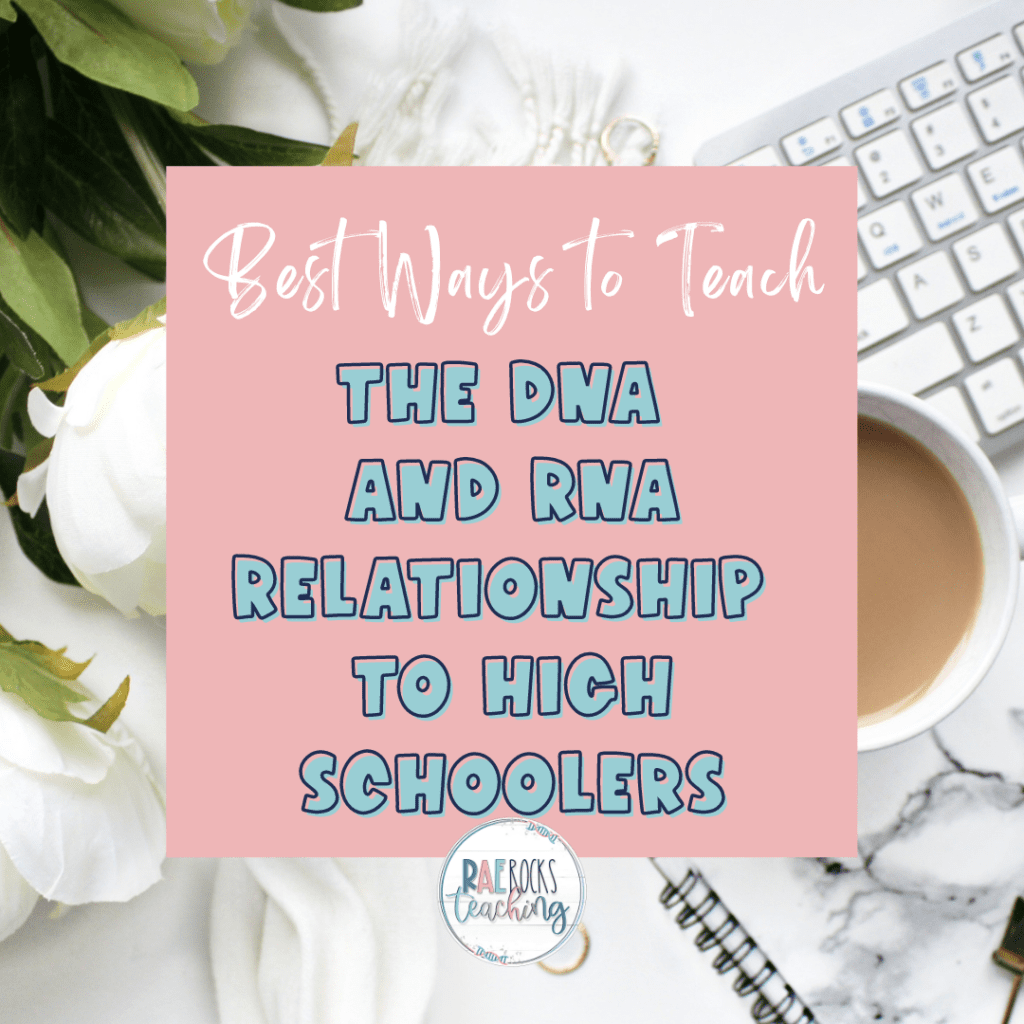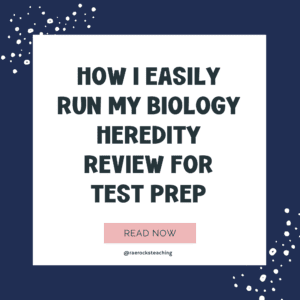SHey there friend! Are you stressed, overwhelmed, and plain tired of planning lessons for your students to learn the DNA and RNA relationship? I can totally relate. I was there once struggling to find engaging resources to help my students understand molecular genetics topics. There is so much online, but having to weed through it all just to find what I wanted was driving me insane. After you have read this blog post, you will discover how I transformed my lessons making them simple yet effective for teaching the DNA and RNA relationship.
DNA Structure Parts
I start this unit by discussing the structure of DNA and a brief history of how it was discovered. I go into details about the base pairs, the double helix, and the hydrogen bond that holds them together. While we are discussing the structure, I hold up a 3D foam model of DNA in order to point to certain areas we are referring to in the lesson. Students learn about why the bases are paired up because they are purines and pyrimidines. We do a DNA and RNA comparison.
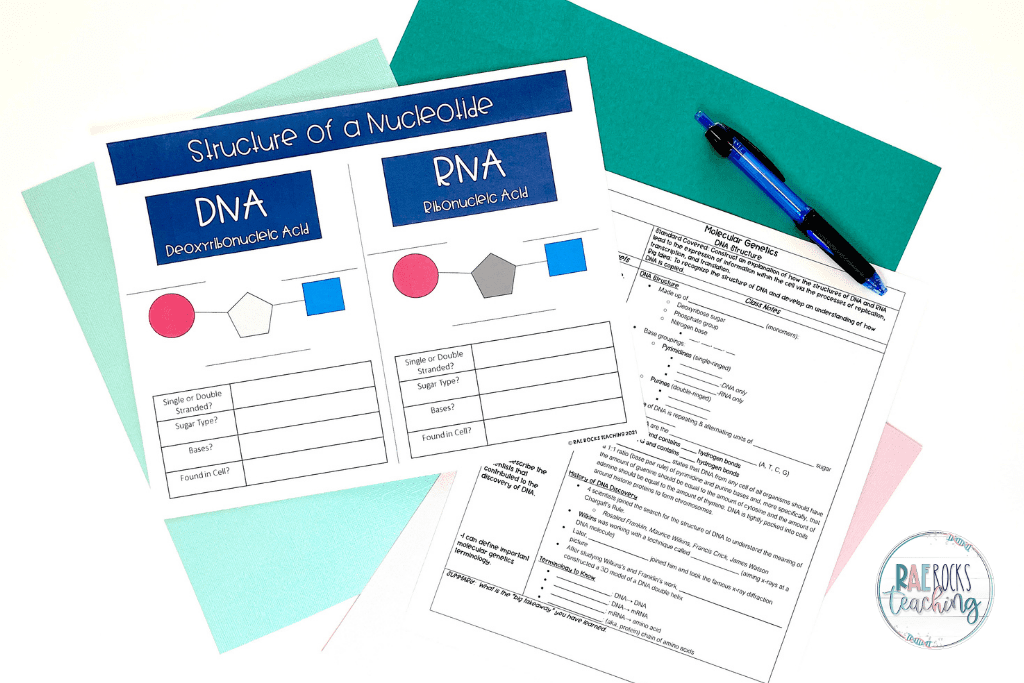
-
Save
Once we have finished our lesson, I break them into groups of 3-4 so they can create their own DNA model. I use a kit from Lab Aids because it is easy and a great visual for students. I tell them to take a picture of it once they have finished their model to have as a reference later. We close out the block by watching Bill Nye on Genes.
DNA Replication Stages
The next day I review the structure of DNA by holding up my foam 3D double helix. I want to make sure they remember how DNA is structured before moving on to how it replicates. Since we cover mitosis and meiosis prior to this unit, I simply touch on DNA being located in the nucleus and how it replicates in interphase. We talk about DNA needed to replicate in order to ensure that all cells receive a copy of instructions. Then, the real lesson comes on DNA replicating. This is a process that can be very confusing to students due to the fact there are so many enzymes to remember. I made a step-by-step DNA replication notes handout that students fill out as we talk about each stage. This has been super helpful because it breaks it down into simple steps and provides a picture labeled with what is going on at each stage. I used to get so worked up about teaching DNA replication, but since I have been using this method, it has taken off the stress.

-
Save
After the lesson is complete, I go over some replication problems with them to demonstrate pairing up the bases to create a new DNA strand from the original template. They get the hang of this pretty quickly so I hand them out a dna replication worksheet for them to practice on their own. We check their answers before moving on to the next topic which is protein synthesis. I like to play a Quizizz review game with them on DNA replication as a way for them to self-assess. If I see students are struggling, I have also made a foldable with them to simulate DNA replicating.
Protein Synthesis in Order | DNA and RNA Relationship
This used to be another topic I used to dread teaching even though it is my favorite. I was just so frustrated with teaching it because I didn’t have a good way to convey the content. So, I decided to make my own and it has been fantastic. I use a step-by-step approach to teach protein synthesis similar to how I teach DNA replication. I walk through each of the steps of protein synthesis in order from start to finish. The students are filling in the blanks to the notes while labeling the diagram of the process. By breaking it down into chunks like this, I have seen tremendous growth in students. They are often confused at the beginning but have a much better grasp by the end. Once we have finished our notes, I also make another foldable with them. The more visuals and hands-on activities they can do the better.

-
Save
The next thing we do is to practice transcribing and translating a gene. I do a few with the students to demonstrate the process and how to read a codon chart. The biggest mistake I see here is that students rush and accidentally use the tRNA instead of the mRNA to find the amino acid. I have them number their worksheet of the order they should go and this has helped as well. At the end of the class, we watch a video clip of transcription and translation. The next day as a review, I will show the Amoeba Sister Protein Synthesis video.
Mutations DNA
Before I move into mutations, I have students take a quick quiz on protein synthesis. They need a strong foundation of how to transcribe and translate before learning about mutations. If students do well, we move on to mutations, if not, then we spend more time reviewing and practicing. Once I am certain most students “got it”, it’s time for mutations. I was having problems teaching mutations years ago until again I made my own style notes. I walk them through the 2 main types of mutations and break it down into chunks from there. Each type of mutation, I have them do an example with me in their notes outline. Students have to “do” in order to really understand. This has worked out very well. I also give them several examples that we work through as a class and some they do on their own. From there, I assign them practice to do on their own in class. We wrap up the day with another Amoeba Sisters video on Mutations.
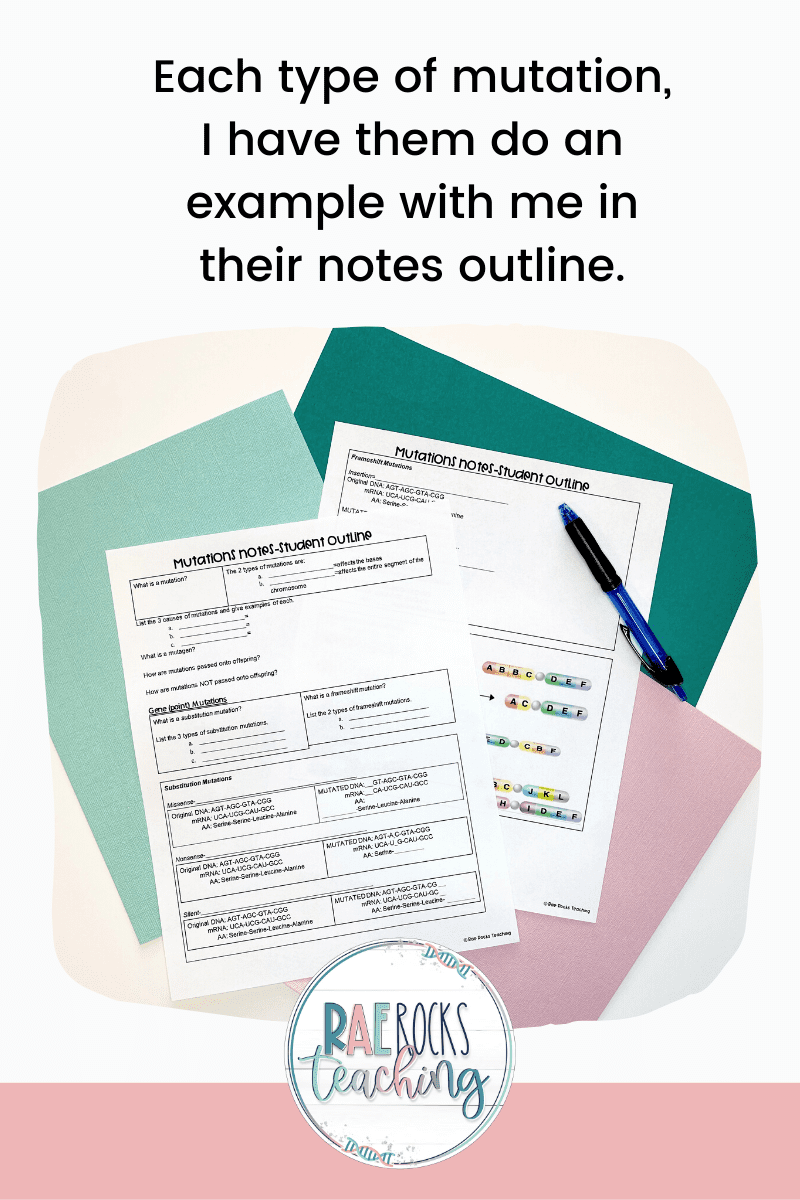
-
Save
The next day in class, we review with a Quizizz game and then jump into the lesson. In the past, students used to ask me about real-life examples of mutations and their effects on individuals. I made Examples of Mutations stations that not only discusses the types of mutations, but also provides context to students. The stations allow students to take on the role of a geneticist in which they must “diagnose” each patient with the type of mutation that caused their disease or disorder. Students are super engaged and love seeing real-life examples that relate to the material we are covering in class.
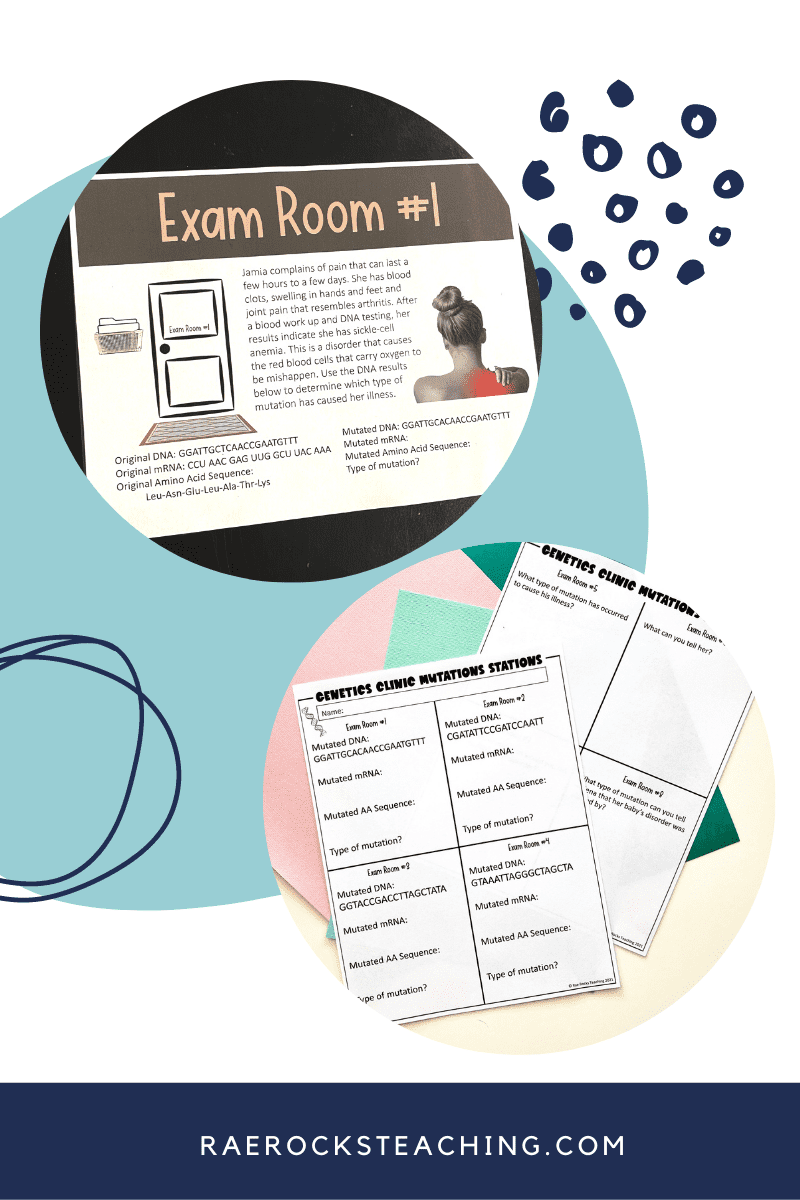
-
Save
Bonus
I have recently started to have my students read articles on COVID-19 and how the virus has been mutation leaving us with various strains. It is super relevant and they are interested due in part because they are still living it. There are so many articles out there and research continues to evolve with each variant.
I hope you have enjoyed this article on the best ways to teach DNA and RNA relationship and would share it with your teacher friends!
I love sharing with y’all and would love to connect on IG or Facebook. Don’ forget to snag the 15 Activities for Biology to Increase Engagement FREEBIE!
Follow me and send me a DM with what you need more of because I’m here to help! If you are looking for even more inspiration, find me on Pinterest!
Are you interested in getting your hands on ALL of the resources mentioned in this article? Then check out the Molecular Genetics Bundle.

-
Save
Wanna read more?
How to Get Your Students Excited About DNA Mutation Examples
One of the Main Reasons Why Protein Synthesis is Important to Teach
Help Your Students Discover the Role of Genetics in Evolution
Share via:

